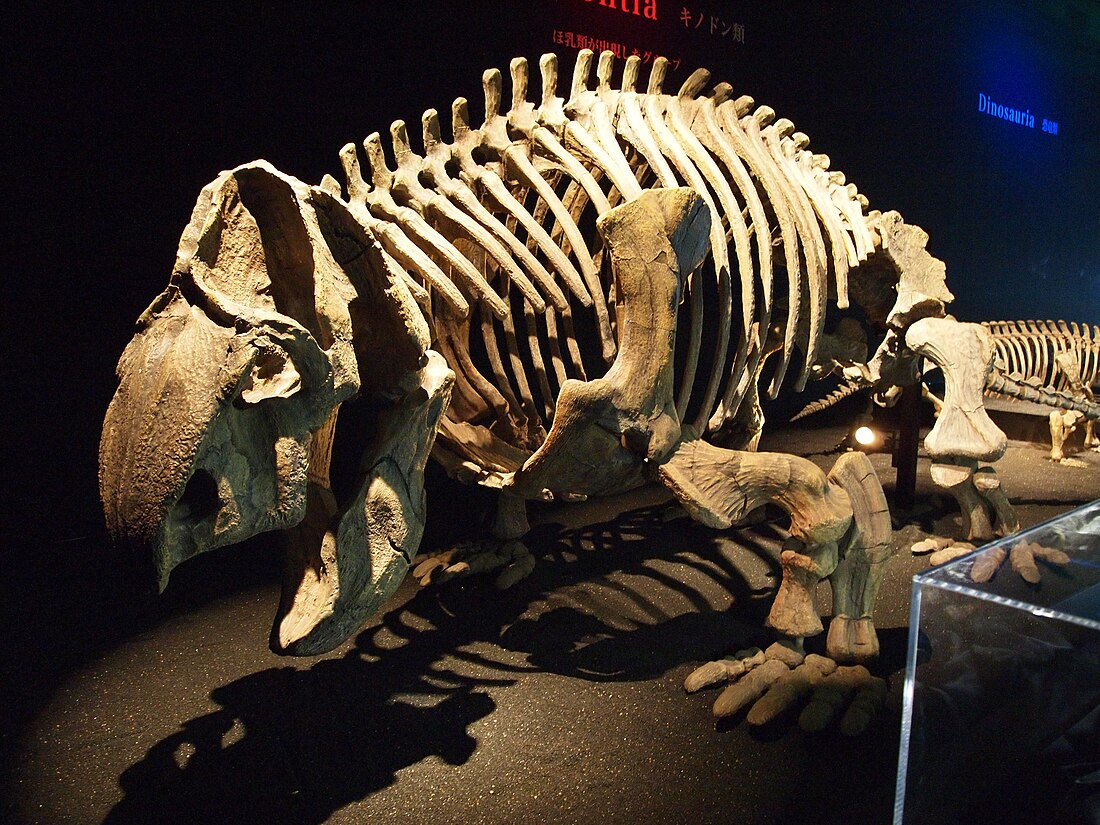Top Qs
Timeline
Chat
Perspective
Ischigualastia
Extinct genus of dicynodonts From Wikipedia, the free encyclopedia
Remove ads
Ischigualastia is an extinct genus of large dicynodont therapsids that lived during the Late Carnian age and the Early Norian age of the Late Triassic Period. The genus was found in and named after the Ischigualasto Formation (Cancha de Bochas Member) of the Ischigualasto-Villa Unión Basin in northwestern Argentina. It has been placed in the family Stahleckeriidae.[1]
Remove ads
Description

The genus is described as an enormous dicynodont, with a short, high skull, and lacking tusks.[2] Its close relative is Placerias,[3] which measured around 3.5 metres (11 ft) long and weighed up to 800–1,000 kilograms (1,800–2,200 lb).[4][5][6]
Paleoecology
It was a large quadrupedal herbivore, most common at the base of the Ischigualasto Formation. It was a common member of the local fauna, although not as abundant as the medium-sized herbivores Hyperodapedon and Exaeretodon.[citation needed] It was one of the two dicynodont that lived in the Ischigualasto Formation (the other being Jachaleria). The only danger to such a huge animal was the almost equally large carnivorous pseudosuchian Saurosuchus and perhaps the predatory dinosaur Herrerasaurus, which shared the same environment.[citation needed] Along with its relative Placerias, it was the second largest dicynodont after the gigantic Lisowicia.
Remove ads
See also
References
External links
Wikiwand - on
Seamless Wikipedia browsing. On steroids.
Remove ads

